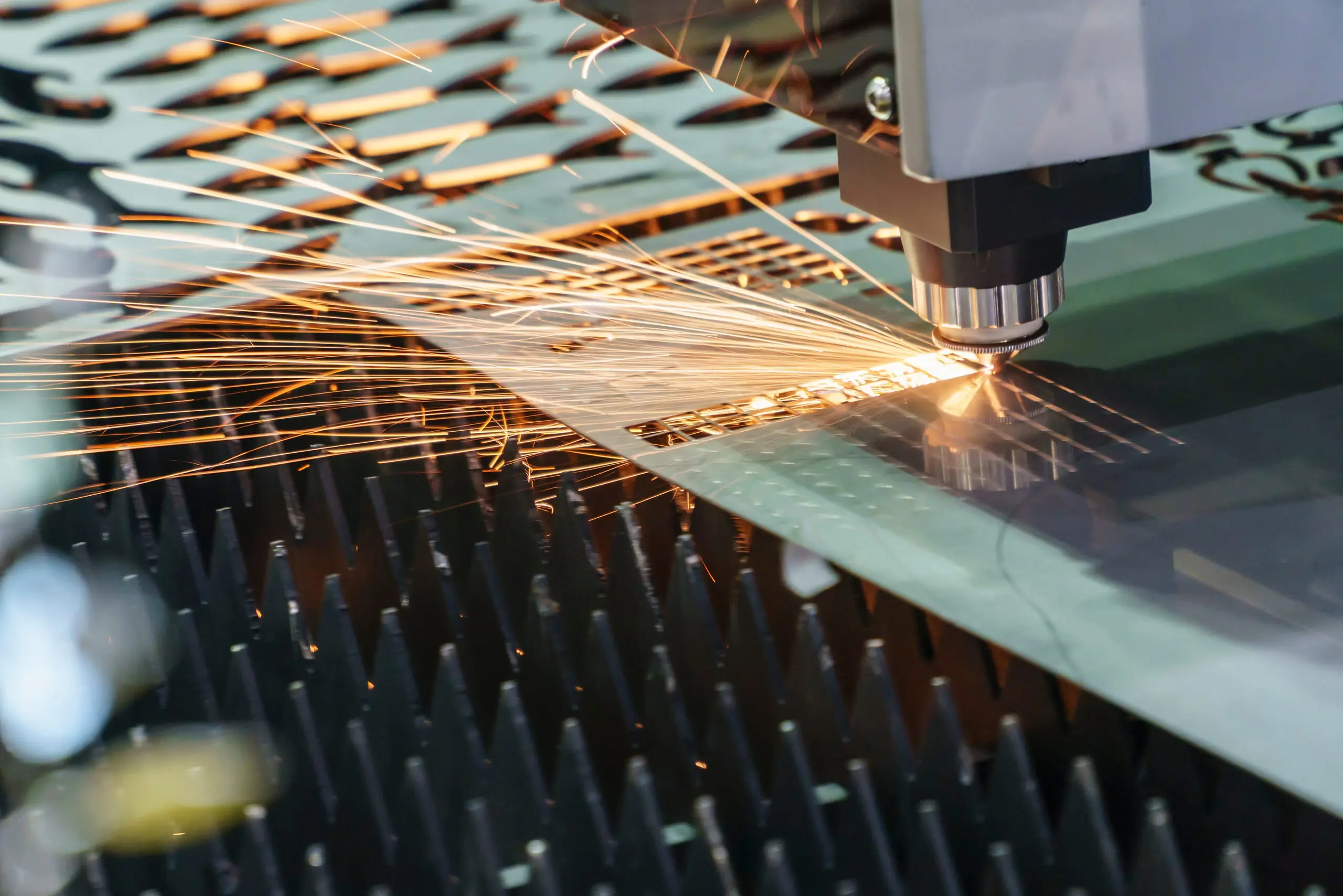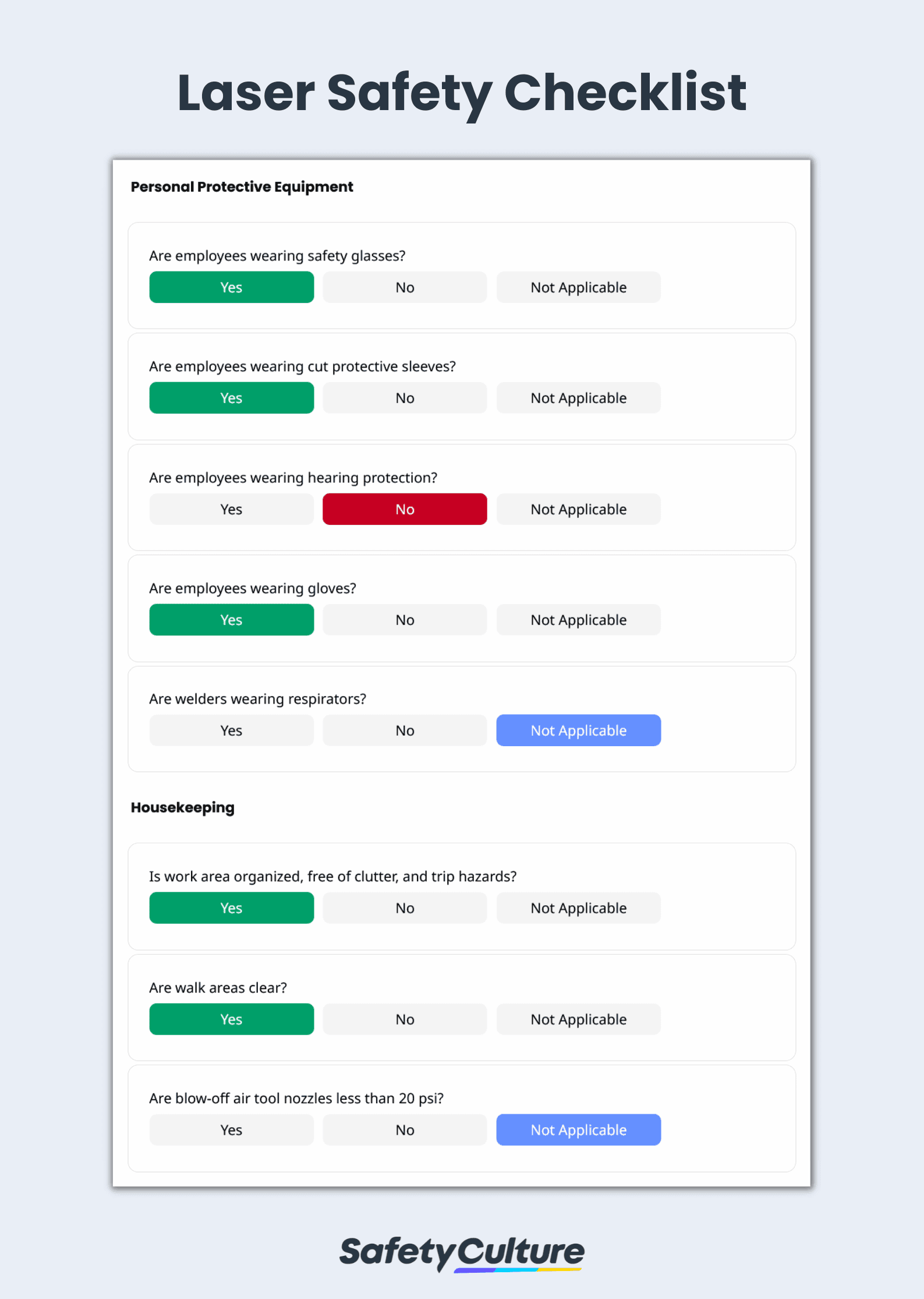What is Laser Safety?
Laser safety is a systematic approach practiced in medical and industrial workplaces to ensure the safe use of lasers. It aims to minimize the risk of incidents that can lead to serious injuries such as skin burns and eye damage. Generally, laser safety involves identifying the four major hazard classes and implementing the appropriate safety measures.
What is a Laser Safety Checklist?
A laser safety checklist is a tool used across various industries such as manufacturing, education, and healthcare to ensure the safe use of lasers for work. Laser Safety Officers (LSOs) perform laser risk assessments to identify laser hazards, enforce appropriate control measures, and reduce the risk of eye and skin injuries.
Why is it Important?
Laser beams from handheld lasers or laser pointers can cause flash blindness and severe eye injury through direct contact with the retina. That being considered, workers need to be aware and even more cautious of the hazards presented by industrial lasers such as those used for metal fabrication.
In 2018, a Massachusetts-based metalworks company experienced a casualty after a worker was trapped in a laser cutting machine. Laser safety should be prioritized by employees using lasers at work, not only for their personal safety but also for the safety of others.
Laser Safety FAQs
No. The Occupational Safety and Health Administration (OSHA) currently does not have a comprehensive laser standard but acknowledges that the American National Standards Institute (ANSI) and International Electrotechnical Commission (IEC) provide guidance related to worker protection.
For example, Oregon OSHA specifically recognized ANSI Z136.1-2007 as the industry standard for the safe use of lasers and expects employers to have an LSO who conducts a hazard evaluation of all beam and non-beam hazards, ensures that all control measures are implemented and followed, among others.
Yes. Even though Class 1 lasers are inherently safe, especially when it is enclosed inside a device such as laser printers and CD/DVD players where accidental physical exposure is highly unlikely, it may still be hazardous if directly viewed with optical instruments such as binoculars or eye loupe.
However, Class 3B and Class 4 lasers emit the most hazardous beams and pose the greatest risk for adverse biological effects. Exposure to direct or scattered radiation from Class 4 lasers can cause permanent vision loss and instantly burn the skin. Materials susceptible to burning such as paper and fabric are also easily damaged and destroyed by Class 4 lasers.
No. While personal protective equipment (PPE) is required to keep individual workers safe, total or limited enclosure of beam paths can also effectively control laser hazards. Engineering controls for lasers include posting appropriate laser warning signs and having interlocks on its protective housing.
To apply administrative and procedural controls, make sure that Class 3B and Class 4 lasers are operated by qualified and authorized personnel and that standard operating procedures or SOPs are available, including alignment procedures and limitations on spectators.



